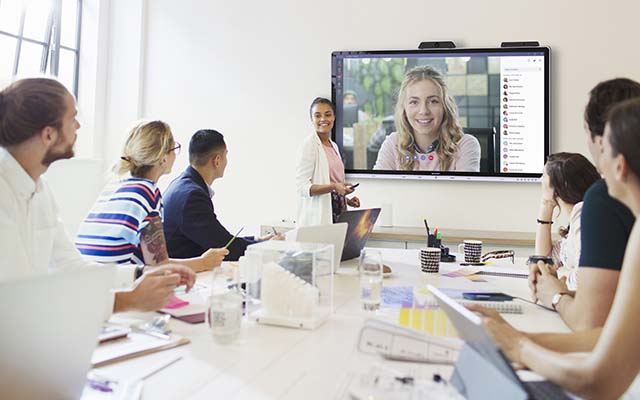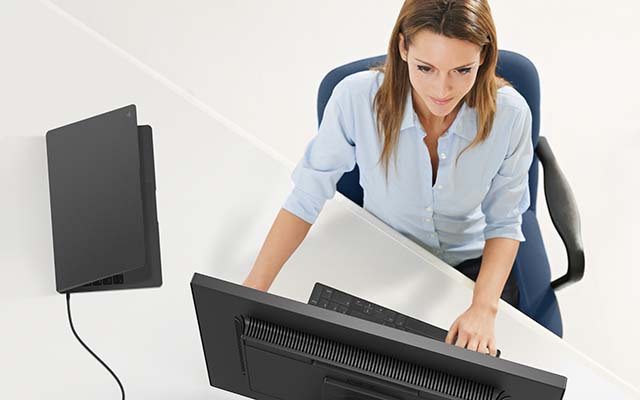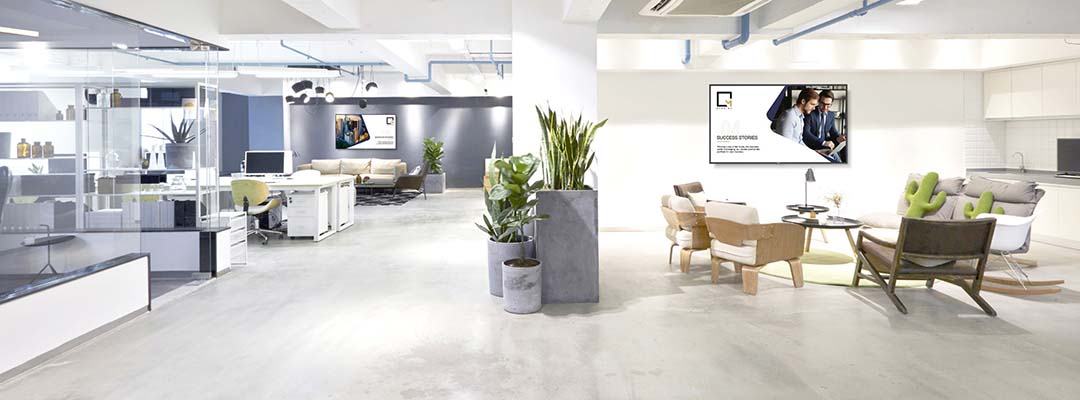Hybrid working: we’ve been getting by, now, how do we thrive?

For nearly two years we’ve lived and worked under the spectre of Covid. Welcoming a new year makes us hopeful for a fresh start and we want to feel tentatively optimistic for 2022.
‘Managing’ the Covid situation feels unnervingly haphazard. Will we / won’t we be going into lockdown makes for dizzying uncertainty for everyone. People demand a plan of action, but with a virus which has an agenda all of its own, is it really possible to define an exit strategy?
Business leaders are under similar pressure. How can they make a defined plan for the future of work when so much is still unknown?
We need a strategy, a way forward that helps us to define the new way of working. Getting by is no longer enough, we need to thrive.
Company culture and management style have never been more important. Hybrid working relies on trust and employee empowerment. If you can’t trust your employees to manage their working day effectively, your best and brightest will walk out the door.
Companies that have embraced the new way of working and are striving to support the flexibility that employees desire will thrive, securing the talent for competitive advantage.
There’s the key word – flexibility.

Hybrid means different things to different people, across different job functions and different organisations. It simply cannot be prescriptive; it must be flexible. And yet, in order to cultivate culture and enrichment, to shape a strategy for the future, it is necessary to set some structure to the hybrid workflow.
In a recent whitepaper, ‘the nuts and bolts of hybrid working’, Sharp/NEC offers a practical guide to the hotly discussed, but rarely defined, new way of working. Acknowledging that there is no one-size-fits-all solution, the article offers practical advice, putting forward several tools and ideas that might be helpful.
Invest in technology which supports hybrid workflows
Technology plays a crucial role in facilitating communication and collaboration. Whatever shape and form hybrid takes, getting people to communicate and collaborate is fundamental to helping businesses to flourish and thrive.
The office provides vital face to face communication and sense of community. But time spent in the office is only worthwhile if you know that other people will be there at the same time. And whilst you’re there, will the technology and space be available to you? Scheduling software can help employees see where their teams are sitting and where desks are available. It can help workers to plan their week, ensuring optimal use of resources and making a trip to the office worth their time.
Once you’re in the office, the use of technology needs to be totally seamless. Faffing with cables and incompatibility issues must be a thing of the past. The Bring Your Own Meeting (BYOM) concept is entirely appropriate for hybrid workflows. Employees simply continue to use their own laptop whether at home, or in the office.

The NEC WD551 Windows Collaboration Display is purpose-designed to support BYOM scenarios, a single cable connects the user’s laptop to the 55” large screen, sizing-up the already familiar desktop. There’s no hassle or training required, no new software or devices to find your way around. For digital whiteboarding and video conferencing, the large touch screen and integrated camera and mic is instantly ready for action. The USB-C cable meanwhile provides power to the laptop, and since the solution uses the laptop’s Wi-Fi, IT security is not an issue.
With IoT room sensors to automatically switch the display on or off, whilst providing vital air quality and room occupancy data to feed the scheduling software, the WD551 has hybrid workflows running through its vital components! Its not hard to see why so many of the world’s leading companies, especially those optimised for MS Teams, are opting for this product as they reshape their office spaces - its success is in its simplicity.
For larger meeting spaces, the 70” Sharp PN-CD701 Windows Collaboration Display provides the extra screen estate allowing more eyeballs to see the content as well as the eyeballs of remote participants.
Find out more about the NEC WD551 and Sharp PN-CD701.

A large screen estate is not only necessary for group collaboration, but also for your personal workspace. Toggling and scrolling through numerous and vast documents is tedious and demotivating on a laptop screen when you’ve got used to a complementary screen of 24” or more.
Whether working at home or hot desking in the office, the ability to quickly connect your laptop to a desktop monitor, without creating a jumble of cables, provides welcome functionality.
A USB-C enabled monitor allows workers to connect using a single cable which will also charge the laptop.
Height adjustability and low blue light technology are also important. You can find out more about choosing the perfect monitor here: ‘6 things to look for in a business monitor.’
If attending the office is now predominately about connecting with people face to face, providing spaces that encourage socialising is important. Common areas with comfortable furnishings and adaptable functionality enable impromptu interactions, all vital to nurturing a modern office culture. Digital information displays reinforce company messaging in these casual spaces, they can also be used to share good news, promote CSR initiatives and to find out more about colleagues. There’s no better way to bond with colleagues than to share the sporting highlights on the big screen!
Low cost Large Format Displays with an integrated media player, such as the NEC ME Series, provide robust professional performance and can be mounted on a trolley for extra versatility.

At a time when competition for talent is fierce, employers who actively promote flexible workflows and find an agreeable balance between remote and in-office will enjoy a significant advantage over their competitors.
The facilitating tools and technology are out there - forward thinking companies are already making the investments they need take to them into the future; no longer just
Talk to us, we have the expertise to guide you to hybrid harmony.
